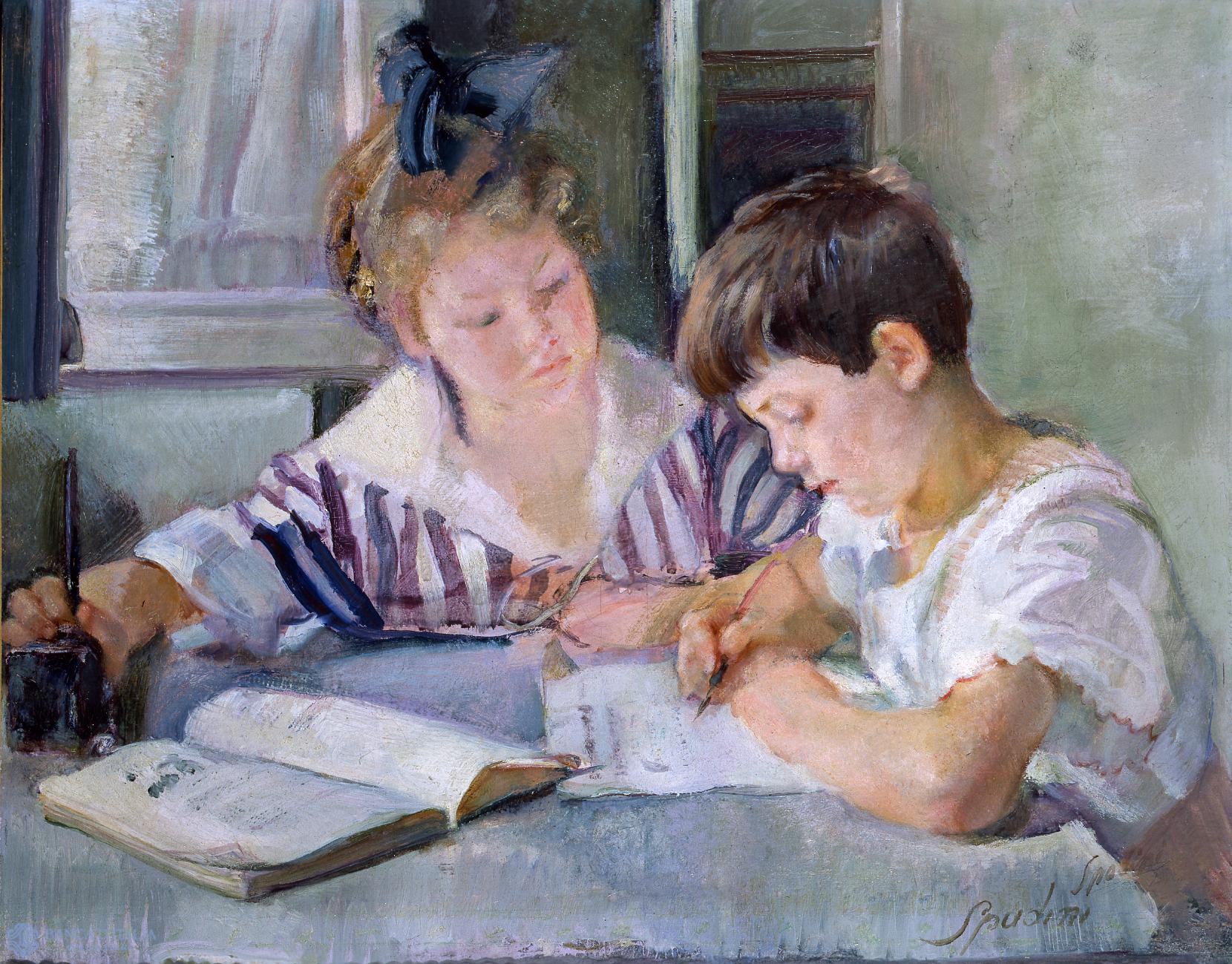Armando Spadini was born in Florence in 1883 and died in Rome in 1925. He was self-taught, painting ceramics in the Doccia factory in Florence and he frequented the second generation of the Macchiaioli, animated by his great admiration for Fattori. Initially he was influenced by De Carolis and in 1904 he produced floral vignettes and covers for the Florentine review Leonardo. In 1910 he moved to Rome, benefiting from the award of a grant, and he immediately exhibited his work at the Secessions of 1913-15. Distancing himself from his pursuit of the Avant-Garde, he leaned towards a mellower and more sensitive naturalistic style of painting, aiming to revive, with intense luminosity, the magnificence of ancient Venetian art, nevertheless revisited from an Impressionist perspective, making Renoir’s soft lines his own. He painted en plein air in the vibrant atmosphere of Villa Borghese, combining portraiture with landscape painting. He suffered economic hardship, supported by Giovanni Papini, Adolfo Venturi and Emilio Cecchi, but appreciated by a very limited audience. After his first personal show at the Casina Valadier in Rome, his last exhibition was at the Venice Biennale of 1924, which brought him tardy recognition and success, however not in time for him to enjoy it.
Armando Spadini
Armando Spadini (Florence 1883 - Rome 1925)
20th century AD



